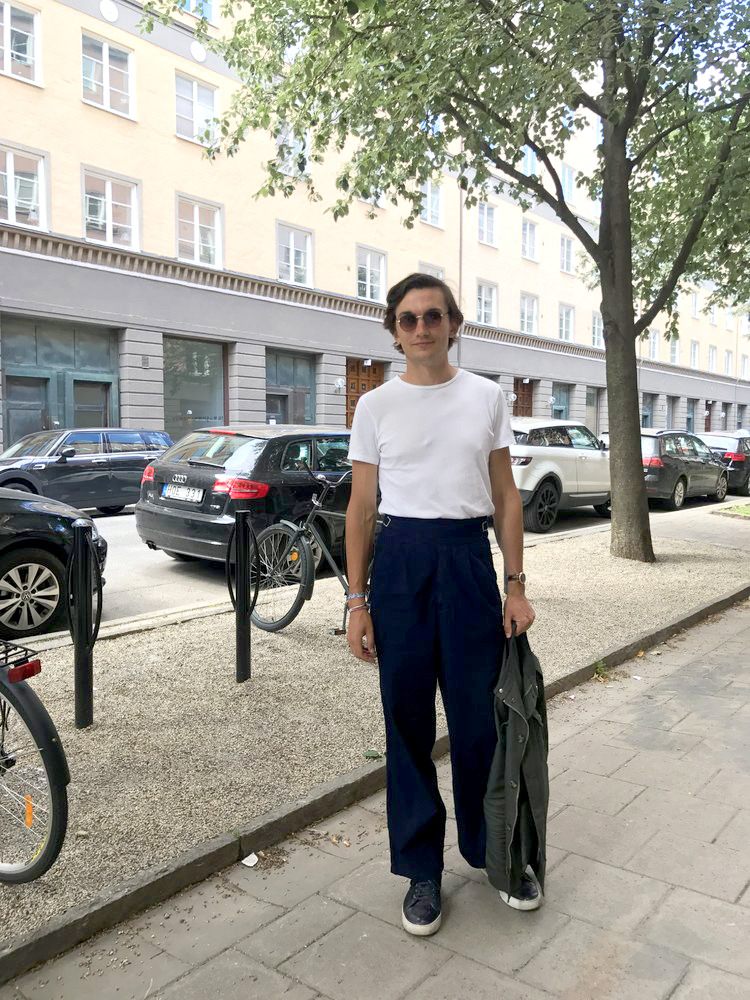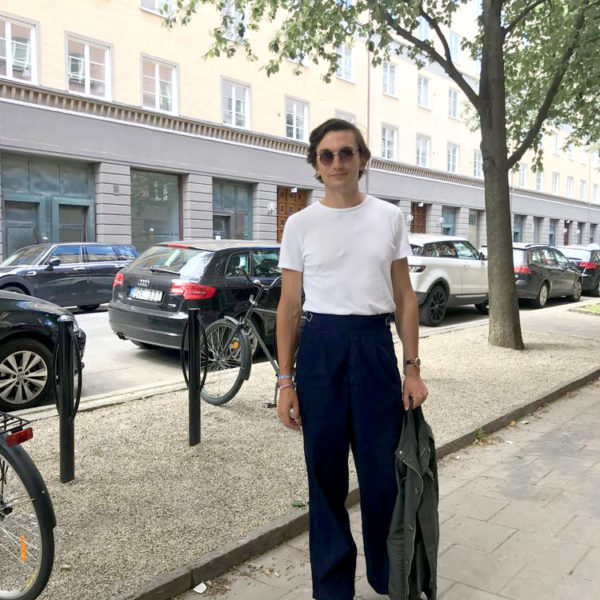
A lot has been written over the years about how soft Italian tailoring can feel more comfortable than their British counterparts (the dichotomy is often a bit overplayed, as modern British tailoring isn’t nearly as stiff as people often characterize). That said, my idea of comfort these days comes more from cut than construction. After nearly twenty years of the slim-fit trend, I’m ready for fuller-fitting clothes. Trousers that don’t cling to the leg; jackets with plenty of room for movement.
Putting on something that fits loose can feel strange if you’re used to slimmer fitting clothes. When you first slip into relax-cut trousers, you’ll immediately notice how comfortable they feel. That’s quickly taken over, however, by your wondering how to style them. Do you wear your normal oxford-cloth button-downs with these pants? How does this cut look with the sort of jackets you have in the closet? What kind of shoes goes with that wider hem?
I’m still figuring out those questions for myself. I’ve mostly stuck to chunky knits and slightly oversized topcoats – an easy pairing, I think, for these sorts of trousers. I’ve also seen some guys successfully wear them with loose, over-long shirts, although that comes with a slightly artsy vibe that may not be right for everyone.
Oscar in Stockholm shows yet another way. He’s wearing a pair of navy seersucker Gurkha trousers from this season’s Eidos collection. The neatly fitted white tee, which has a bit more texture than your regular Hanes Beefy, is from Swedish line called Acne. Dark blue, minimalist sneakers are from Lanvin; bracelets from All Blues; vintage watch from Jaeger-LeCoultre. The brown-tinted sunglasses and olive cotton field jacket are vintage finds he picked up while traveling abroad.
Trousers usually play a background role in an outfit – gray flannels set the stage for your sport coat, tie, and shirt combination, just as slim jeans are the foundation for almost any casualwear ensemble. Here, however, the pants are the center of attention. Their loose cut, high waist, and unique closure system make the outfit a lot more stylish than if Oscar went with a pair of regular slim-fit chinos. The silhouette almost has a pre-war feel, but updated.
Oscar has some suggestions on how to wear looser pants:
I wear this kind of cut more during the summer, mainly because Swedish winters are very cold and I prefer a heavy flannel trouser to keep warm. Wide trousers, however, are great for hot summer days. I’d say this cut works well in lighter fabrics, such as cotton or linen (or in my case, seersucker). I like them with a high waist, which I find visually elongates the legs and lifts everything up. The cut also feels inherently a bit casual to me, so I think it pairs well with espadrilles, loafers, or simply designed sneakers. Shirts, however, can be almost anything. I’ve been wearing cuts like this with everything from t-shirts to polos to button-ups. I also like to mix it up in terms of outerwear – field jackets, military style jacket, and even traditionally cut sport coats all work great.
Eidos’ seersucker Gurkhas can be found this season at Unionmade, but be sure to size up one or even two sizes (the waist runs really slim, such that a size 30 is probably best for someone who normally wears a 26 or 28). Also, note that the buckles are a bit wonky, so you may have to replace them. Isaia, their manufacturer, apparently wasn’t equipped to use buckles with prongs, so they went with roller buckles instead. Unfortunately, those slip easily.
Alternatively, you could try brands such as ts(s), Frank Leder, and Document, all of which offer looser cuts this season. Mohawk General Store also offers a bunch of stuff from brands such as Smock Man and Rough & Tumble, which come in both straight and tapered cut varieties (tapered will give the semblance of shape, which is maybe easier to wear if you’re worried about this looking too ‘80s Armani). For something more budget friendly, check out Earl’s Apparel. Their workwear fatigues and chinos are made in Texas, and come in looser fits that recall those styles’ utilitarian origins.
